Ever found yourself in a pickle trying to unearth the ideal campsite while on a hiking adventure? Don’t worry, you’ve got plenty of company. I have also worn those same muddy boots – mining through maps, assessing terrain snags and contemplating potential risks for a secure camping experience.
This article sets out three tried-and-true tips that will transform your campsite selection from haphazard guesswork into a walk in the park, promising comfort, safety, and breathtaking vistas.
Curious yet? Let’s lace up our boots and uncover the secrets of choosing the ultimate hiking campsite!
Key Takeaways
- Get a map and look for warm, dry campsites that are bug-free, offer privacy, and look nice.
- Consider the Leave No Trace rules, like camping at least 200 feet away from water bodies.
- Look out for hazards like falling tree branches or rocky areas while choosing a campsite.
- Choose a flat surface without rocks or roots to set up your tent for comfort and safety.
- Check if you need permits for certain campsites in national parks before your hike.
- Always bring first – aid supplies in case of emergencies during your hiking trip.
Comprehensive Guide to Hiking Campsite Selection
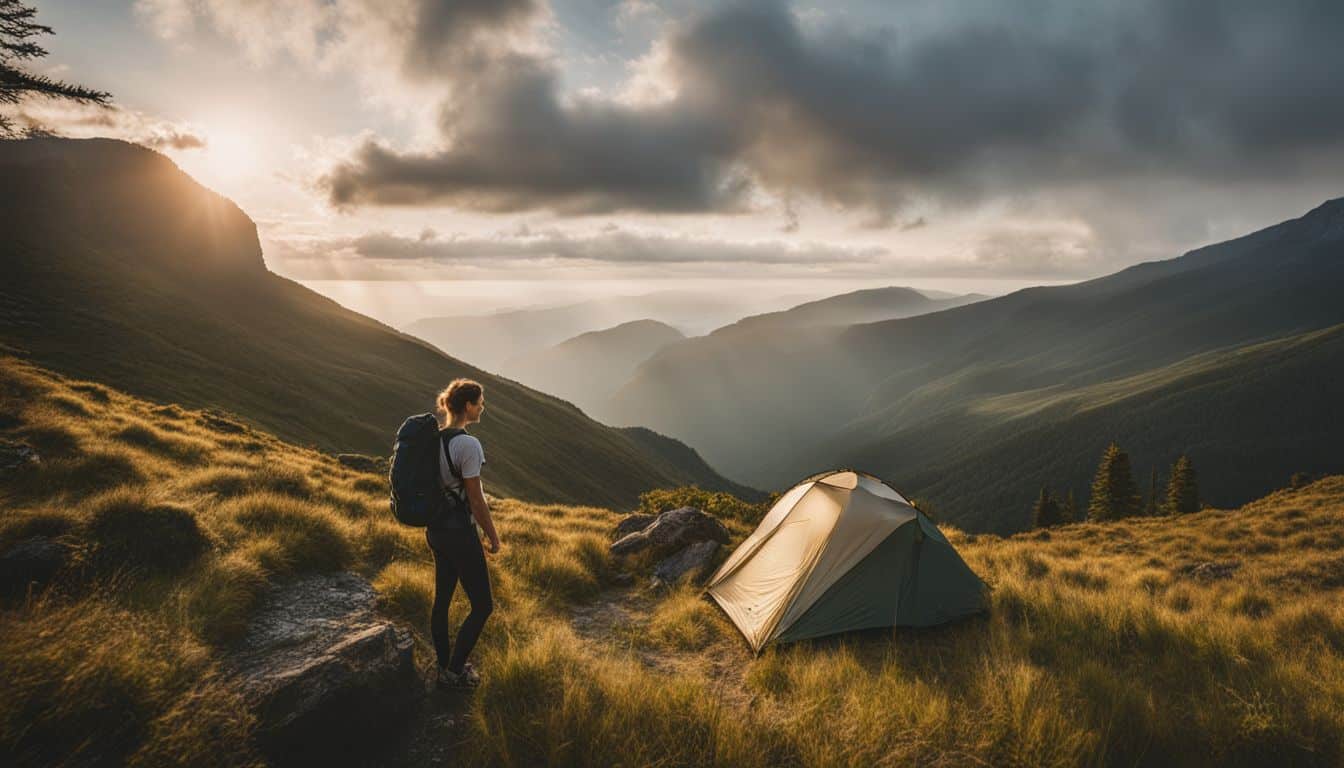
Start by getting a map. The map will show you good spots for camping. Good campsites are warm and dry. They also have no bugs, offer privacy, and look nice. Avoid areas near water or on the top of hills.
Next is to consider the Leave No Trace rules. These rules help keep nature clean and safe for all to enjoy. One rule says you should camp at least 200 feet away from water bodies like lakes or rivers.
Looking out for hazards is important too. Do not set up your tent under a dead tree branch that could fall at any time! Also avoid places with lots of rocks or roots which might hurt your back while sleeping.
The ground should not be hard as this can damage your gear over time. Pick somewhere flat so you won’t roll down a hill in the middle of the night!
Always check if you’ll need a permit to camp at certain sites within national parks before setting off on your hike! This prevents trouble during your trip.
Lastly, come prepared with first-aid supplies just in case anything goes wrong! It’s better to be safe than sorry when it comes to wild adventures like hiking trips!
Tips for Choosing a Backcountry Campsite
When selecting a backcountry campsite, there are several important factors to consider.
Camp near a water source
Camping near a water source sounds ideal. You think of the ease of having water for cooking, cleaning, and drinking. But it’s not as great as it seems. The area near water is often home to many bugs.
Think of getting bit all night by mosquitoes! This camping spot can also lead to more dampness in your tent due to condensation.
Picking a spot by the water may draw in some furry visitors when you least expect them too! Keeping some distance will help with privacy from these nocturnal creatures. Also, just because a lake or stream looks clean doesn’t mean it’s safe to use without treating first.
So don’t be fooled into thinking that camping right next to the water saves you time or effort in treating your water before use.
Find a campsite that’s relatively flat
Picking a flat spot is key for a good hike. It will give you level ground to sleep on and cook meals. Say no to areas full of rocks or roots that can hurt your back at night. An ideal camping terrain has lots of trees and bushes for shade, but it’s also rock-free.
A flat campsite with shade makes your trip better. Trust me, it changes how much fun you have! Be smart when choosing the right place to set up camp in the wilds!
Look for potential hazards
When choosing a backcountry campsite, it’s important to look out for potential hazards. These hazards can include trees with dangling limbs, leaning dead trees, diseased trees, and storm-damaged trees.
You want to avoid camping near these types of trees as they can pose a risk of falling branches or even the entire tree itself. It’s essential to assess the area carefully and choose a spot that is safe from any potential dangers.
By being aware of these hazards, you can ensure a safer and more enjoyable camping experience in the wilderness.
Make sure the surface is free of rocks and roots
Choosing a camping spot with a surface that is clear and free of rocks, roots, and other debris is important for a comfortable and safe hiking experience. It helps to have a smooth and level area where you can set up your tent without any obstructions.
A surface free of rocks and roots also allows for better water drainage, preventing pooling or flooding in the campsite. Additionally, it reduces the risk of accidents or injuries while setting up tents or moving around the campsite.
So, when selecting your backcountry campsite, look for an unobstructed and rock-free surface that provides stability and comfort throughout your stay.
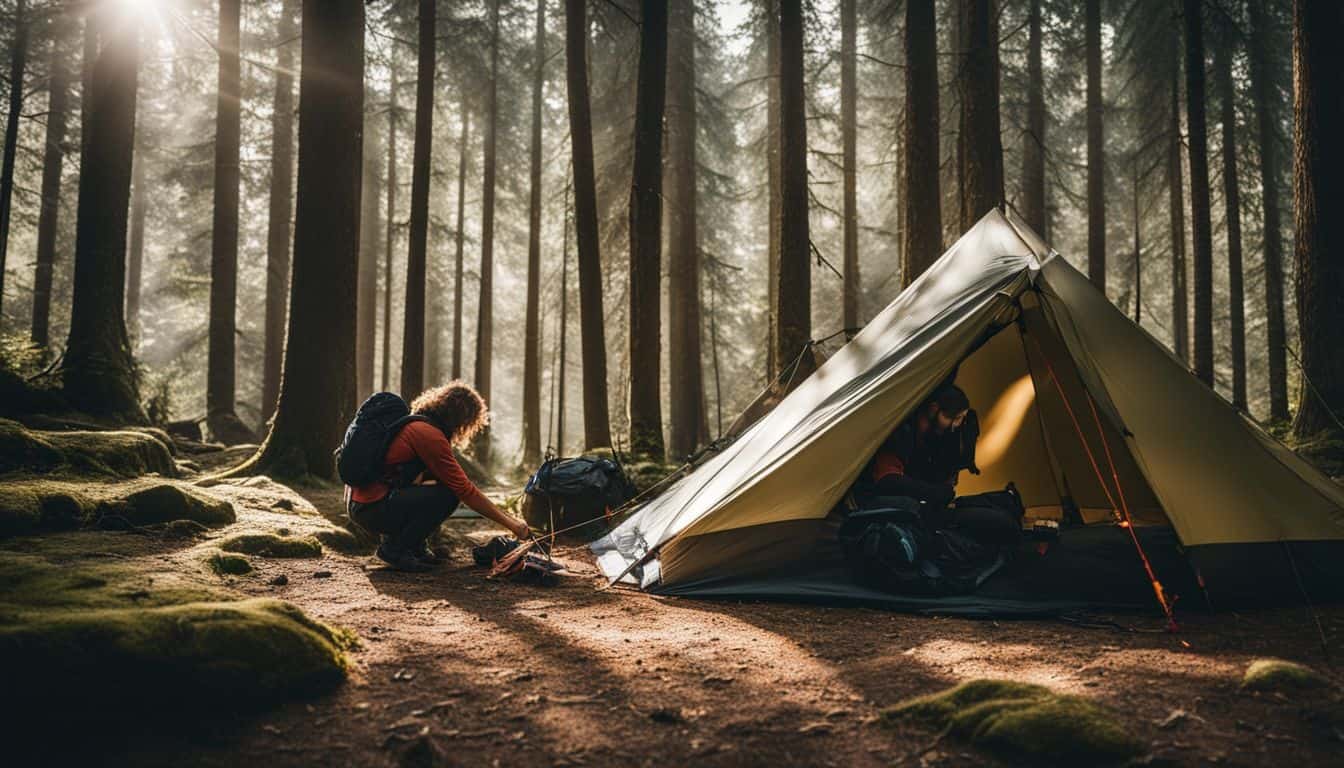
Avoid compacted ground
I always make sure to avoid camping on compacted ground when I go hiking. It’s important because compacted ground can be really uncomfortable to sleep on, especially if you’re sleeping directly on the ground without a mattress or pad.
Plus, it can also decrease safety because the ground is harder and less forgiving in case of falls or accidents. Compacted ground is more likely to occur on frequently used campsites, especially on popular trails where many hikers have walked before.
That’s why I always try to find a campsite that hasn’t been heavily traveled, so I don’t have to deal with compacted ground.
Additionally, choosing a camping spot with the right qualities can increase both comfort and safety by avoiding compacted ground. One thing I look for is finding a campsite that’s relatively flat.
This helps me set up my tent easily and ensures that there are no uneven surfaces or dips where water could accumulate during rainstorms. Speaking of water accumulation issues, it’s also important to avoid camping in low spots where water tends to collect.
Remembering the principle of traveling and camping on durable surfaces is another way to prevent compacted ground while protecting the environment at the same time. By avoiding camping directly on vegetation or delicate areas like meadows, we can minimize our impact and preserve these natural spaces for future generations of hikers.
Camp at least 200 feet away from water
When choosing a backcountry campsite, it’s important to remember the rule of camping at least 200 feet away from water. This helps protect the water quality and prevents pollution.
It also allows wildlife to access their habitats without disturbance. By following this practice, we can ensure environmental conservation and maintain sustainable camping practices.
So when setting up your campsite, keep in mind to find a spot that is at least 200 feet away from lakes, streams, or any other water sources for a low-impact camping experience.
Try to find a location with a breeze
Finding a location with a breeze is important when choosing a backcountry campsite. A gentle wind can keep bugs away and reduce condensation inside the tent, making your camping experience more comfortable.
Look for a spot with good airflow, where you can feel a cooling draft or enjoy a pleasant air current. Prioritize selecting a campsite that offers a slight gust of wind or even just a mild zephyr to enhance your overall camping experience.
Avoid exposed campsites in bad weather
When choosing a backcountry campsite for hiking, it’s important to avoid exposed campsites in bad weather. These are areas like ridges or hilltops that are not protected from the elements.
Camping in these locations can put you at risk of high winds and extreme cold, especially during storms. Instead, look for sheltered campsites in protected locations. Consider camping in low-lying areas, wooded sites, valleys or basins, or spots with natural barriers like trees or vegetation.
These places can provide natural windbreaks and offer more protection from harsh weather conditions.
Important Facts:
1. Avoid camping on exposed ridges or hilltops, especially in areas prone to frequent storms.
Consider Leave No Trace principles
When choosing a backcountry campsite, it’s important to consider Leave No Trace principles. These principles are all about being responsible and protecting the environment while enjoying outdoor activities.
One of the key principles is to disperse use, which means avoiding creating campsites and trails in sensitive areas. This helps prevent damage to natural spaces and preserves their beauty for future hikers.
Another important principle is proper waste disposal. It’s crucial to pack out your waste and leave no trace behind, so that the environment remains clean and unspoiled. By following these principles, we can ensure sustainable hiking and conservation practices, preserving our outdoor spaces for generations to come.
Choose a site that offers privacy
When selecting a backcountry campsite, it’s important to choose a site that offers privacy. This means finding a location that is secluded and away from other campers. Respecting the privacy of others is also essential.
Look for areas with natural screening, such as trees and bushes, which can provide some concealment for your campsite. Being in a private setting allows you to fully enjoy the solitude and tranquility of nature without disturbances from other campers.
Keeping the confidentiality of your camping experience enhances the overall enjoyment and relaxation during your hiking trip.
Spring through Fall Campsite Selection
Spring and fall are great seasons for camping, but choosing the right campsite is crucial for a successful trip. Here are some tips to help you select a suitable campsite during spring through fall:
- Plan in advance: Take the time to research and plan your campsites ahead of time. This will ensure that you have a better chance of finding the best spots.
- Avoid low-lying areas: During spring and fall, low spots can be prone to water accumulation and flooding. It’s best to choose higher ground for your campsite to avoid any potential issues.
- Stay away from water sources: While it may be tempting to camp near a beautiful lake or river, it’s important to set up your site at least 200 feet away from water sources. This helps protect the natural ecosystem and prevents contamination.
- Look for flat ground: A flat surface makes sleeping and setting up your tent much more comfortable. Look for areas with minimal slopes or inclines when selecting your campsite.
- Check for hazards: Before settling on a spot, scan the area for any potential hazards such as dead trees, loose rocks, or unstable terrain. Safety should always be a top priority.
Winter Campsite Selection
Winter campsite selection is crucial for a safe and successful camping trip. Here are some important factors to consider:
- Choose a sheltered campsite: Look for areas protected from strong winds, such as behind trees or rock formations.
- Consider wind protection: Position your tent or campsite in a location that offers natural windbreaks, like hills or dense vegetation.
- Be aware of avalanche risk: Research the area’s avalanche danger rating before setting up camp. Avoid camping in areas prone to avalanches.
- Pack down the snow: Create a suitable tent site by packing down the snow with snowshoes or skis. This will provide a stable surface for your tent.
- Follow Leave No Trace principles: Practice responsible camping by minimizing your impact on the environment. Leave your campsite as you found it and avoid damaging vegetation.
Year-Round Campsite Selection
Planning ahead is essential for year-round campsite selection. Here are some tips to consider:
- Look for elevated areas: Choose campsites in higher areas to avoid flooding and water accumulation.
- Avoid proximity to water: Camping near water can lead to cold, damp conditions, especially in colder months.
- Consider less crowded campsites: Look for campsites that are less popular during the off-season to increase your chances of finding a spot.
- Opt for mid-week camping: Weekdays are usually less busy, making it easier to secure a campsite reservation.
- Explore inland campgrounds: Coastal campgrounds tend to be busy year-round, so consider inland alternatives for a more peaceful experience.
- Check reservation availability: Some campsites require reservations year-round, so make sure you plan accordingly.
- Consider coastal alternatives: If you prefer coastal camping, look for alternative options that may not be as crowded as the popular ones.
- Take weather considerations into account: Be aware of weather patterns and changes throughout the year when selecting a campsite.
- Look for scenic locations: Enjoy beautiful views by choosing campsites with stunning landscapes.
Staying at Shelters and Designated Campsites
Staying at shelters and designated campsites is important when you go hiking. In places like the Appalachian Trail, hikers are required to stay at these specific locations. This helps protect the environment and ensures that everyone has a safe and enjoyable experience.
There are about 125 designated campsites along the Appalachian Trail alone! Other places, like New York and New Jersey, have similar regulations.
When choosing a campsite, it’s important to follow any rules or guidelines set by the park or trail authorities. These sites often provide basic facilities such as toilets and fire pits.
Staying at these designated areas also helps preserve the surrounding nature because they’re designed with minimal impact in mind.
I’ve found that staying at shelters and designated campsites provides a sense of community among fellow hikers. It’s a great opportunity to meet other outdoor enthusiasts and share stories and experiences with one another.
Plus, there’s usually someone there who can offer advice or help if needed.
So next time you plan a hiking trip, make sure to check if there are any shelters or designated campsites available along your route. Not only will it keep you on the right side of the law but also contribute to preserving nature for future generations of hikers!
Dispersed Camping Guidelines
When choosing a dispersed camping site, there are a few important guidelines to keep in mind. Here are some tips to help you find the perfect spot:
- Stay within a one – mile perimeter away from campgrounds and 100 feet from any stream.
- Make sure your campsite is at least 100 feet away from any water source.
- Be self – contained by bringing all the necessary supplies for your camping trip.
- Set up your campsite on durable surfaces like established campsites, rocks, gravel, dry grasses, or snow. Avoid camping on vegetation to minimize impact.
- Protect standing trees by not using nails or axes that can damage them.
- Look for suitable existing sites or natural clearings in the woods to set up your campsite.
Hammock Camping Considerations
When considering hammock camping, there are a few important things to keep in mind. Comfort and weight are key factors when choosing a hammock for hiking. Look for one that is lightweight and has a good suspension system.
Insulation is also important, so make sure your hammock has an underquilt or some form of insulation to keep you warm at night. A bug net is essential to keep pesky bugs away, and a rainfly will protect you from the elements.
Tree straps are necessary to hang your hammock properly without damaging the trees. Lastly, consider using a tarp underneath your hammock for added protection against moisture from the ground.
In addition, it’s important to debunk common myths about hammock camping. Many people think that finding suitable trees can be difficult or that they won’t have any privacy on exposed trails.
However, with proper planning and research, suitable trees can almost always be found, even in areas where they may seem scarce. As for privacy concerns, there are techniques such as hanging your hammock closer to the ground or utilizing vegetation as natural barriers.
Remember that the goal of hammock camping is to stay dry, warm, and comfortable while enjoying the beauty of nature. Choosing the right equipment and understanding these considerations will help ensure a successful and enjoyable hiking experience with your hammock setup.
Safety and First Aid Precactions
Before embarking on any hiking or camping adventure, it’s crucial to prioritize safety and be prepared for emergencies. One important step is to check your vaccinations and make sure they are up to date.
Vaccines can protect you from diseases that may be present in the wilderness. It’s also essential to consider hiking safety and camping safety guidelines. Check the weather forecast beforehand so you can be prepared for any potential weather conditions like rain or storms.
In addition, it’s vital to take precautions against bugs and ticks by using bug repellent and wearing protective clothing. These small pests can pose a significant risk, as they may carry diseases that can harm your health.
It’s also wise to learn basic first aid techniques and have a first aid kit readily available in case of injuries during your hike or at the campsite.
When selecting a shelter or campsite, choose one that prioritizes safety. Make sure it provides adequate protection from elements such as wind and rain. Practice campfire safety by extinguishing fires completely before leaving the site, preventing accidental forest fires.
By following these safety measures, you can enjoy your hiking or camping trip while minimizing risks and ensuring a safe experience in nature.
Conclusion on Hiking Campsite Selection
In conclusion, by following these 3 proven tips for hiking campsite selection, you can increase your chances of having a successful and enjoyable camping experience. Remember to find a flat spot away from the trail, avoid low spots that may collect water, and set up camp before it gets dark.
By planning ahead and being mindful of safety and Leave No Trace principles, you can have a memorable adventure in the great outdoors.
FAQs on Hiking Campsite Selection
1. What factors should I consider when selecting a hiking campsite?
When selecting a hiking campsite, consider factors such as water availability, level ground for sleeping, and proximity to natural features like views or trails.
2. Can I choose any spot in the wilderness as my campsite?
No, it’s important to follow regulations and guidelines set by authorities. Choose designated campsites or use Leave No Trace principles to minimize your impact on the environment.
3. How can I find water sources at a hiking campsite?
Look for signs of nearby water sources such as streams or rivers on topographic maps, use GPS devices that indicate water sources, or ask experienced hikers in the area.
4. Are there any safety considerations when selecting a camping site?
Yes, ensure your chosen campsite is not in an avalanche-prone area, away from hazardous wildlife habitats, and protected from strong winds or falling debris.
5. What are some additional tips for finding a successful hiking campsite?
Consider factors like privacy from other hikers, access to restroom facilities if available nearby, and minimal disturbance to local flora and fauna during your stay.

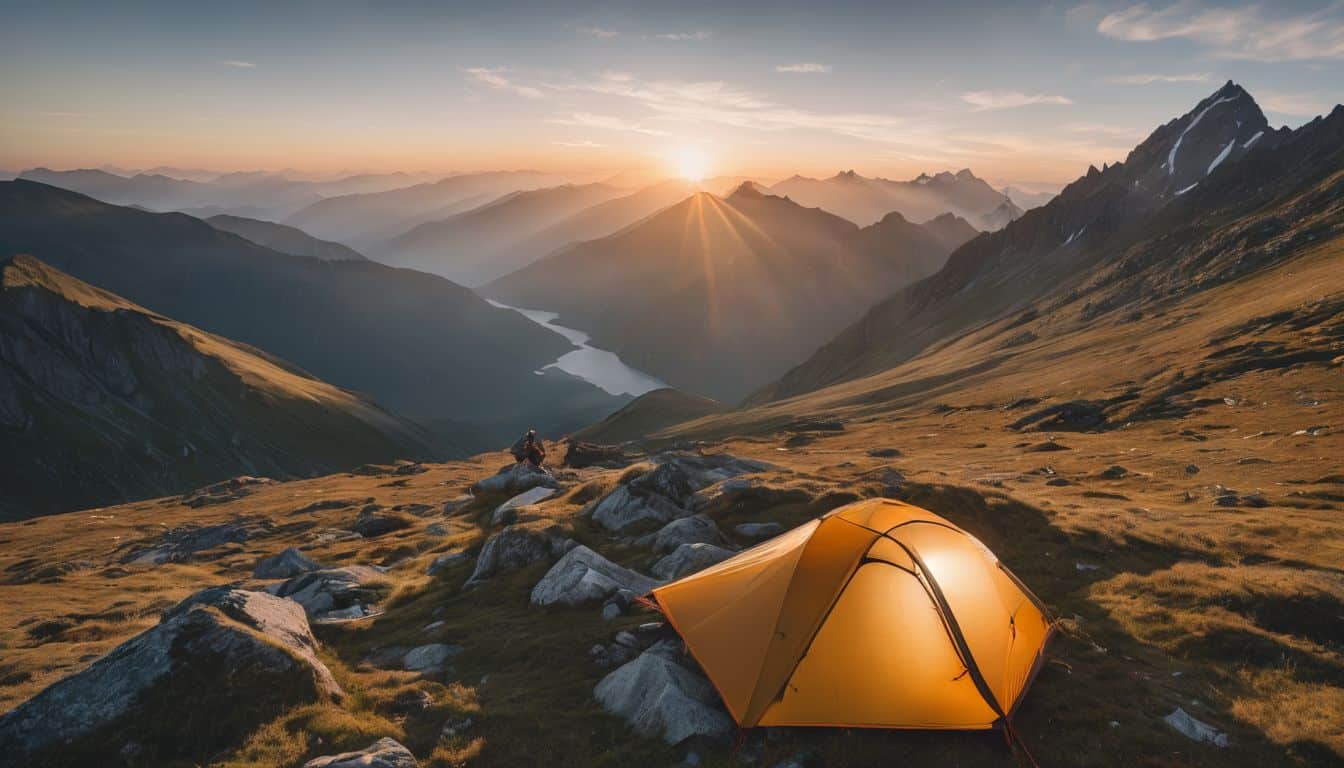
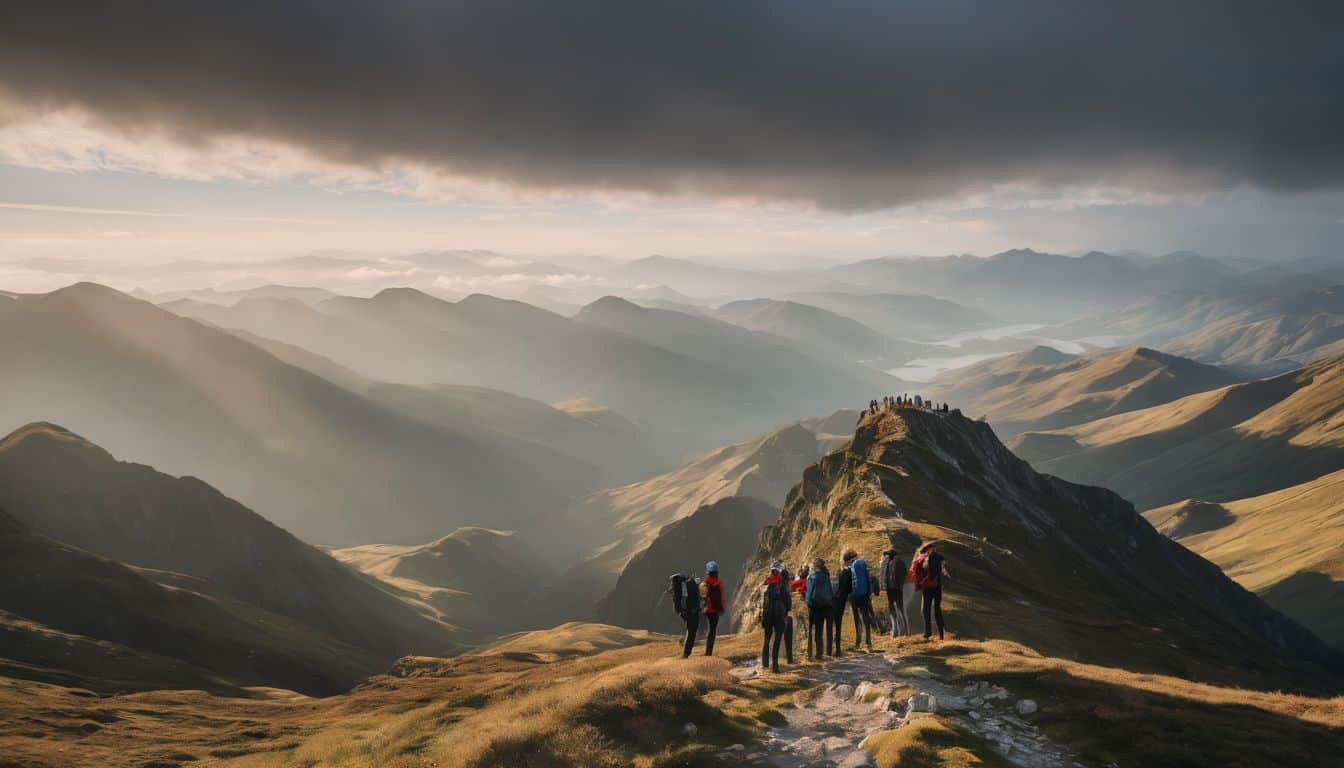
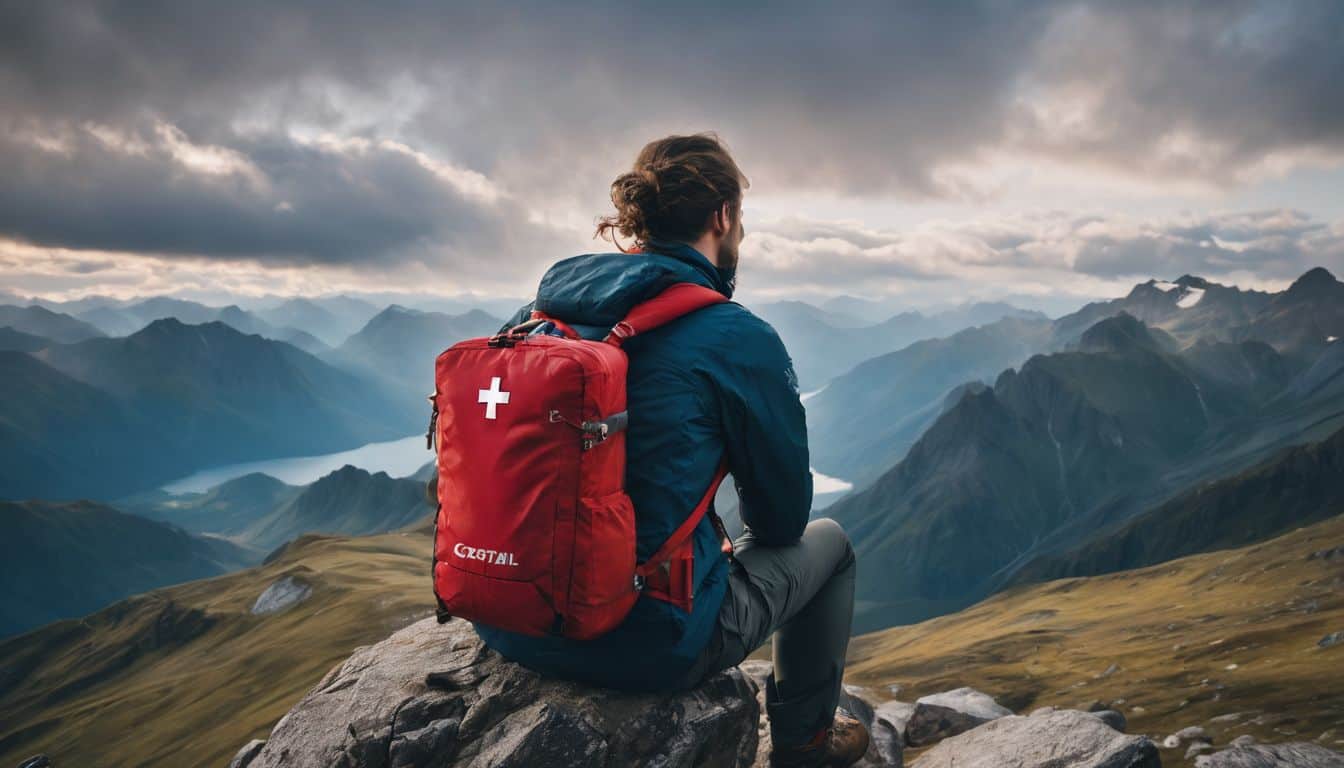
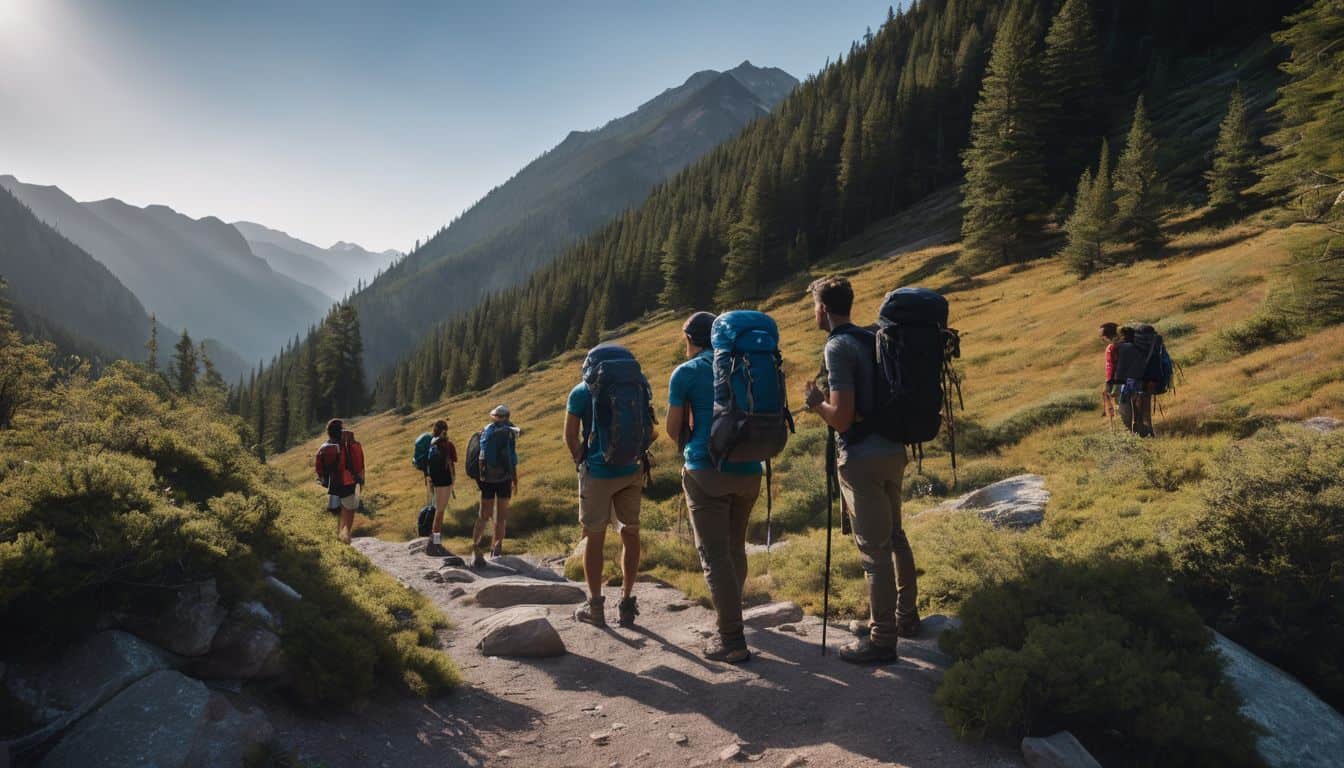
Leave a Reply